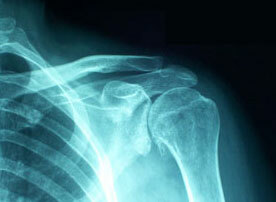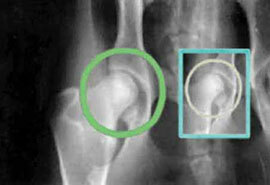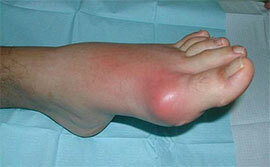 Synovitis is the inflammation of the joints and the accumulation of fluid in the cavity of this joint.
Synovitis is the inflammation of the joints and the accumulation of fluid in the cavity of this joint.
Most commonly, the synovitis of the shoulder joint begins to develop due to:
- infections;
- of the resulting injury;
- of arthritis.
Synovitis is acute and chronic, infectious and non-infectious( aseptic).
Non-infectious synovitis is represented by the following group of medical complications:
- neurogenic;
- traumatic;
- is allergic.
Acute synovitis is particularly pronounced in the early stages of development. Usually, the joint begins to change its shape, acquiring a more smooth outline.
Body temperature starts to rise, in the area of inflammation there are severe pains. The motor functions become significantly limited.
Chronic synovitis is rare. It is characterized by disorders of the lymph circulation and circulation in the inflammatory foci. The main symptoms of the disease are:
- exacerbation of pain;
- severe fatigue;
- travel restrictions.
Today's diagnosis allows you to start timely treatment to prevent the onset of a chronic form of the disease.
Synovitis of the shoulder joint occurs quite often. Its most common form is called traumatic synovitis. This name was obtained as a result of injuries, dislocations and bruises leading to the production of excessive amounts of liquid accumulating in the joint cavity, which leads to its growth and a significant increase.
When establishing the diagnosis of "traumatic synovitis of the shoulder joint," treatment is primarily aimed at combating internal injuries.
The occurrence of traumatic synovitis is possible with:
- static deformities;
- damage to the synovial membrane by the moving articular body;
- insufficient functioning of the ligament apparatus;
- damage to articular cartilage.
Treatment of synovitis of the shoulder joint should be carried out depending on:
- the main cause of the disease;
- flow pattern;
- development stage.
For the treatment of synovitis, surgical and conservative intervention is used.
At the outset, the causes of the disease are diagnosed. Then, therapy is carried out to eliminate it. After this, general restorative and symptomatic therapy is prescribed, in conjunction with:
- a drug treatment course for the correction of the disease;
- restorative treatment;
- physiotherapy procedures.
The decision on surgical treatment is made taking into account the severity of the disease. However, after the operation, rehabilitation and medication therapy is required.
Treatment methods include:
- puncture of joints( synovial fluid is sucked off by injected with a thin needle);
- application of immobilization means( tires, pressing dressings, gypsum);
- drug therapy.



